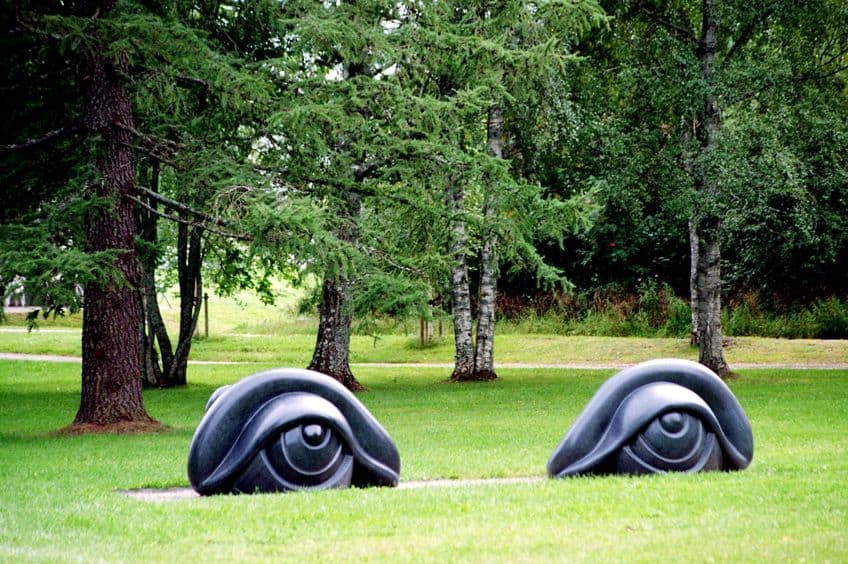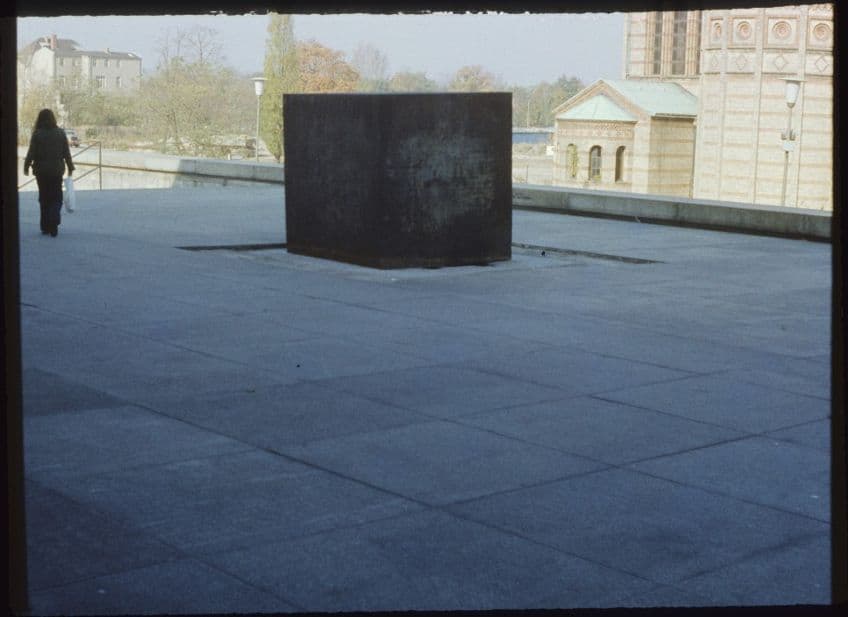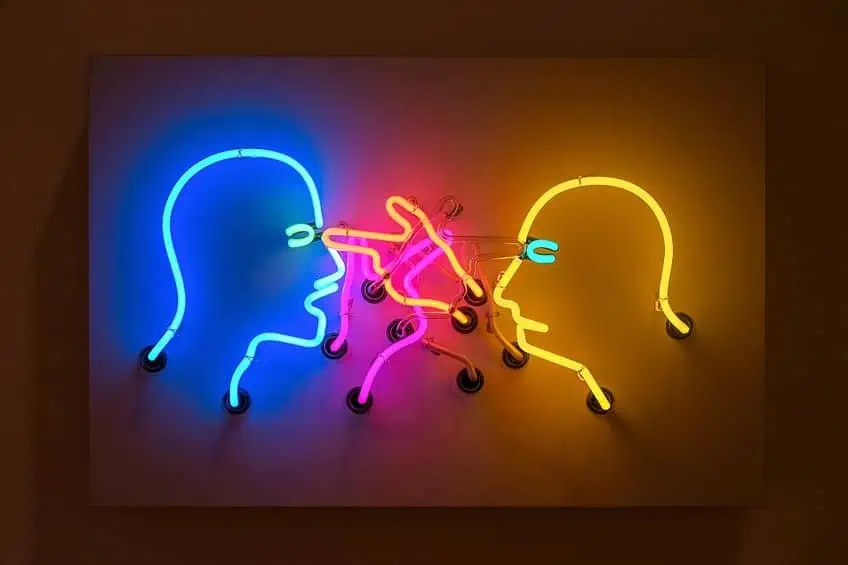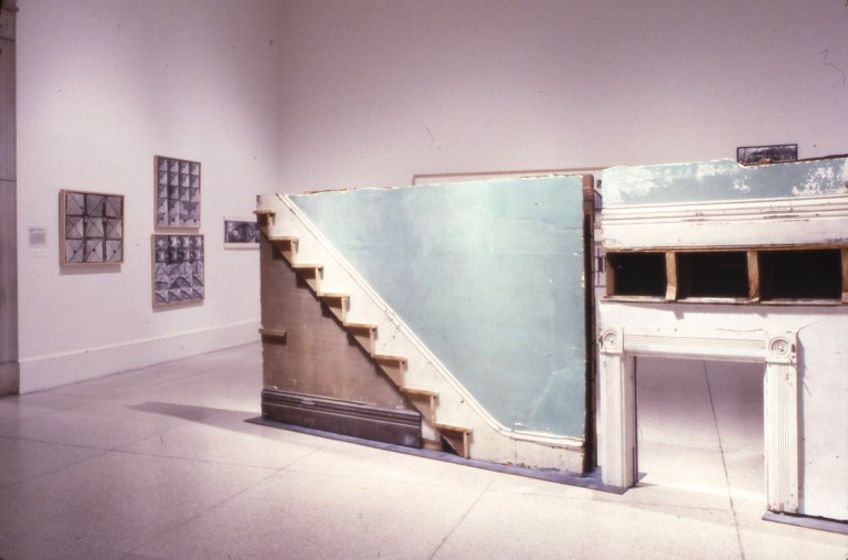Post-Minimalism – A Deep Dive into the Art Movement
Minimalism was a post-war art movement that influenced many 1960s art styles and visual languages across fine art, architecture, and music. Since the rise of Minimalism, visual art has adopted a more formalist visual language that was recognized as “post-minimalism”. In this article, we will explore the fascinating nuances of the post-minimalism movement, including a few examples of artists who are recognized as post-minimalist creators.
What Is Post-Minimalism?
The post-minimalism movement is recognized across the visual arts and music as its unique derivative of the 1960s art movement Minimalism. It is defined in context to the field it is used in and is said to incorporate elements of the every day with formalist visual approaches that introduce a sense of the “human” to the machine-like visuals of Minimalism. This is one aspect of post-minimalism that distinguishes it from Minimalism, however, it also encompasses a variety of artists, most of whom fuse elements such as “seriality”, which originated in Minimalism, with customized and hand-made elements to reduce the sense of machine-like production and pure form as seen in Minimalism.

The Origin of Post-Minimalism
So, when did post-minimalism begin? The post-minimalism movement began in the mid-1960s after Minimalism entered the scene and rose to popularity in New York. In a group show curated by Lucy Lippard in 1966 called Eccentric Abstraction, it is said that elements of post-minimalism emerged. The artists in the show included figures like Louise Bourgeois, Eva Hesse, and Bruce Nauman, whose works not only reflected a modern and edgy appeal of Dadaism and Expressionism but also demonstrated elements with a slight departure from Minimalism.
Post-minimalist art reflected the pliability of materials and relaxed forms, which rested in contrast to the minimalist notions of materiality.
The term itself was first used by the critic Robert Pincus-Witten, who recognized it as a response to Minimalism. Another significant exhibition in 1969 was Anti-Illusion: Procedures/Materials, which was held at the Whitney Museum to explore the anonymity and abstraction of representation in sculpture. Toward the late 1960s, post-minimalism spread outside the United States and was identified in the works of Robert Morris and Richard Serra, both of whom had a vast global influence.
Art Styles and Characteristics of Post-Minimalism
What did post-minimalism art look like? It is important to note that the art styles and visual language of post-modernism vary from artist to artist. Post-minimalism included various art styles including conceptual art, body art, process art, performance art, and site-specific art. While these are all very broad art genres, some of the post-minimalist artists focused on materiality, experimentation of form, and impersonality.

Themes such as anti-form were also found in post-minimalist works, while other artists tended to reject industrial materials and include more bodily elements that were more expressive than minimalist artworks. Post-minimalism also meant that artists could explore new environments and contexts to broaden their practices and processes in land and site-specific art. This made post-minimalism one of the most enduring and versatile art movements, which not only challenged artistic boundaries but also made the 70s a period of intense artistic exploration that interrogated issues such as gender, identity, politics, sexuality, and race.
Early Post-Minimalist Trends and Concepts
Following the 1970s, the 1980s saw post-minimalism taking a back seat in modern society as the emergence of more contemporary art movements started to find their way into the art scene. Most artists in this period also began to engage with mediums such as installation, performance art, and video art.
Below, we will explore the various developments of post-minimalism in body art, process art, land art, and installation art that will provide you with a clearer picture of the different ways that post-minimalist styles were realized in the 1960s and 1970s.
Post-Minimalism in Body Art and Performance
Throughout the 1960s and 1970s, post-minimalist artists who worked in the genre of body art pioneered the rejection of commercial Minimalist art by using the human body as the primary medium to engage with other mediums like performance and painting. With body art, artists were able to explore the human touch and essence of the body in the presence of Minimalism concepts that saw an absence of human form and overt emotional expression. Body art was shaped by the influences of Dadaism, anti-war protests, and Fluxus, which shaped the foundation of the genre as a new medium for artists to engage with viewers on a deeply profound level.
Works such as Blinks (1969) by Vito Acconci and the films of Bruce Nauman expanded the possibilities of body art in a way that left most people speculating about the temporality and nature of the human body. However, it is key to note that post-minimalist body art was not just presented through a lens of simplicity, rather, it confronted viewers to introspect on the pessimism of the day. Themes such as violence, identity, sadomasochism, and the shock factor were added into performances to confront viewers with the realities of the human condition when faced with violence, pain, threatening situations, or tragedy.
Body art and performance were also interlinked in some cases through the shared desire to confront existing ideas about art.
Particularly, the works by controversial post-minimalist Vito Acconci paved the path for explorations of identity and personal space, which directed attention to the use of unconventional mediums in the 1960s, such as performance, to experiment with provocative expression, repetition, and psychological tension in art.
Post-Minimalism in Land Art
The 1970s introduced new ways of advocating for environmental awareness and consciousness in art and society through land and environmental art. Post-minimalism rooted itself in land art through the notion that the physicality and materiality of the earth could be used as a canvas to further disrupt ideas around the natural landscape and art while removing the need for traditional art materials that usually tend to harm the environment. Artists like Richard Long, Tony Cragg, Gordon Matta-Clark, and Robert Smithson have all pushed the boundaries of land art and highlighted themes such as the impact of consumer culture, decay, human connections with the earth, and change.

Materiality is one such factor that made land art in the 1970s particularly post-minimalist since simple interactions with the earth left a great impact on how people began to create art. Works like Line Made by Walking (1967) by Richard Long and Spiral Jetty (1970) by Robert Smithson went on to inspire many land artists to question the ways that artists can maximize the use of natural materials and landscapes without plundering them for the sake of art.
Post-Minimalism in Process Art
Another type of art that was gaining traction in the 1960s art scene was process art, most notably seen in the action paintings of Jackson Pollock, as well as the process works of Richard Serra. Process art played a major role in establishing the groundwork for post-minimalism by emphasizing the production process of art as inseparable from the meaning of the artwork. Process art is based on the actions and processes of the artwork that rely on themes of impermanence, time, and site-specificity. Artists like Eva Hesse, for example, leveraged industrial materials to produce new organic forms, one of which can be seen in her work Accession II (1967 – 1969), which reinvented the visuals of a Minimalist cube by introducing a sense of sensuality and warmth.
Process art was therefore a medium to transform the public’s interpretation and understanding of materiality and the relationships that artists shared with their art.
Post-Minimalism in Installation Art
One post-minimalism focus area in art was the use of space and the rejection of conventional art objects, which found its opportunity in installation art. Installation art was at its height around 1968, which saw a shift in the focus of artworks from the artist to the viewer. Installation pieces immersed their audiences in the art itself as active participants instead of stationery observers. In doing so, artists combined installation with other post-minimalist genres such as body art and performance to create psychologically charged engagements. Post-minimalism installation art embraced the use of natural materials and man-made objects to introduce more intimate ways of questioning the relationships between nature, industrialization, human life, and our surroundings.

Post-Minimalism in Conceptual Art
In Conceptual art, post-minimalism showed up in the works of artists like Robert Barry and Eva Hesse, who prioritized ideas over the visual representation of art. Conceptualism was a key principle of post-minimalism, which changed the way artists viewed abstract concepts, as ideas that could be expressed in any medium or genre. The transition from materiality to concept was dubbed part of post-modernism and promoted the experimentation with art beyond traditionally accepted mediums and forms. Post-minimalism crossed paths with Conceptual art in photography, which can be seen in the works of artists such as Gary Hill and later Robert Rauschenberg, Jeff Koons, and many more artists who integrated Conceptual photography with new technologies.
Technology as a medium in conceptual art and photography also played a role in shaping post-minimalist sculptures and photography by highlighting the effects of technology on society and the natural world.
Significant Post-Minimalism Artists
In essence, post-minimalism favored the art of production, and the rejection of traditional media, and highlighted the need to reflect on various emerging societal issues. Below are a few significant post-minimalist artists whose progressive approaches and ideas to art have addressed some of early contemporary society’s burning questions.

Eva Hesse (1936 – 1970)
| Artist Name | Eva Hesse |
| Date of Birth | 11 January 1936 |
| Date of Death | 29 May 1970 |
| Nationality | German-American |
| Mediums | Sculpture, painting, and commercial textile design |
Eva Hesse was perhaps one of the most famous artists of the post-minimalism movement, whose influence reached far and wide. Hesse’s work was concerned with the visual concepts of Minimalism and is considered to be proto-feminist as she explored the psychological tensions between organic form, whimsy, everyday objects, sexual innuendo, and industrial materials. Hesse began her career as a commercial designer after fleeing from Nazi Germany and gained recognition as a prominent emerging artist in the 1960s.
Her experimentation with femme fluid forms and her use of spontaneous intervention made her work stand out as poetic and post-minimalist.

Vito Acconci (1940 – 2017)
| Artist Name | Vito Acconci |
| Date of Birth | 24 January 1940 |
| Date of Death | 27 April 2017 |
| Nationality | American |
| Mediums | Performance, video art, sculpture, architecture, and landscape design |
Vito Acconci was one of the many pioneers of post-minimalist art, whose experimental attitude toward performance and video art left an impact on not only the relationships between viewers and performances but also the criticism of it. Acconci’s works have contributed to the movement in controversial ways that saw him use his body to pilot video and performance while using aggressive and sometimes sexually provocative ways of drawing attention to his desires and psyche as a male artist.
Acconci also interrogated language to attempt to explore the horizons of everyday communication through conceptual art and later delved into engagements with public spaces and installations to unpack issues around global geopolitics.

Bruce Nauman (1941 – Present)
| Artist Name | Bruce Nauman |
| Date of Birth | 6 December 1941 |
| Nationality | American |
| Mediums | Performance, sculpture, drawing, photography, video art, neon, and printmaking |
Bruce Nauman is a famous American post-minimalist and conceptual artist whose artistic career spans multiple mediums. Nauman is often cited as a pivotal figure in the post-minimalism movement and is celebrated for his use of neon and video-based installations and performance artworks.
A few important themes addressed in his work include language, the human psyche, the human condition, and identity among other concepts that embrace unconventional approaches to creating visceral experiences in art.
 Double Poke in the Eye II (1985) by Bruce Nauman; Jorge Franganillo, CC BY 2.0, via Wikimedia Commons
Double Poke in the Eye II (1985) by Bruce Nauman; Jorge Franganillo, CC BY 2.0, via Wikimedia Commons
Gordon Matta-Clark (1943 – 1978)
| Artist Name | Gordon Matta-Clark |
| Date of Birth | 22 June 1943 |
| Date of Death | 27 August 1978 |
| Nationality | American |
| Mediums | Food art, installation, photography, performance, and architecture |
Gordon Matta-Clark was one of the most important artists of the post-minimalism movement, who was best known for his unconventional and innovative approach to architecture, performance, and food art performances. Matta-Clark produced many artistic interventions that involved the use of photography to document his works as he questioned the traditional perceptions of permanence, space, and materiality. His interventions with space saw the creation of void-like spaces, led by his concept of “anarchitecture”, through the physical construction of buildings and forms that deconstructed traditional architectural standards. Matta-Clark’s work was technically beautiful and demonstrated much conceptual depth, which made his contribution to post-minimalism stand out.

Post-minimalism opened up a door to experimenting with then-unconventional mediums in art that aimed to tackle themes of the human condition, the body, identity, and space in ways that were previously unexplored in Minimalism. It can thus be a vital movement from which one can learn when attempting to establish new ideas and thoughts in mediums such as performance, sculpture, installation, and video art.
Frequently Asked Questions
What Is Post-Minimalism?
The post-minimalism movement refers to a 1960s art movement that originated primarily in the United States as a reaction to the concepts and visual approaches of Minimalism. Post-minimalism encompasses the art genres of body art, land art, process art, site-specific art, and conceptual art that were most popular during the 1960s and 1970s. The movement in visual art is seen as an attempt to humanize the rigid and unexpressive visuals of Minimalism.
What Is the Difference Between Minimalism and Post-Minimalism?
The main difference between Minimalism and post-minimalism is that Minimalism aligns with the idea of simplicity, geometric forms, and repetition, while post-minimalism is a movement that rejects uniformity and seeks more organic and expressive approaches to creating art, engaging with space, concepts, and materials. Minimalism also differs from post-minimalism in that it focuses on the bare essence of objects and concepts by avoiding excess.
What Are the Characteristics of Post-Minimalist Art?
The main characteristics of post-minimalist art include an emphasis on artistic processes, the use of materials that are considered non-traditional, a focus on the concept of the artwork, works that express natural and open forms, and ultimately the rejection of pure geometry.
Jordan Anthony is a Cape Town-based film photographer, curator, and arts writer. She holds a Bachelor of Art in Fine Arts from the University of the Witwatersrand, Johannesburg, where she explored themes like healing, identity, dreams, and intuitive creation in her Contemporary art practice. Jordan has collaborated with various local art institutions, including the KZNSA Gallery in Durban, the Turbine Art Fair, and the Wits Art Museum. Her photography focuses on abstract color manipulations, portraiture, candid shots, and urban landscapes. She’s intrigued by philosophy, memory, and esotericism, drawing inspiration from Surrealism, Fluxus, and ancient civilizations, as well as childhood influences and found objects. Jordan is working for artfilemagazine since 2022 and writes blog posts about art history and photography.
Learn more about Jordan Anthony and about us.
Cite this Article
Jordan, Anthony, “Post-Minimalism – A Deep Dive into the Art Movement.” artfilemagazine – Your Online Art Source. November 14, 2023. URL: https://artfilemagazine.com/post-minimalism/
Anthony, J. (2023, 14 November). Post-Minimalism – A Deep Dive into the Art Movement. artfilemagazine – Your Online Art Source. https://artfilemagazine.com/post-minimalism/
Anthony, Jordan. “Post-Minimalism – A Deep Dive into the Art Movement.” artfilemagazine – Your Online Art Source, November 14, 2023. https://artfilemagazine.com/post-minimalism/.


